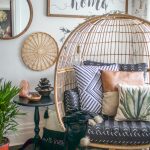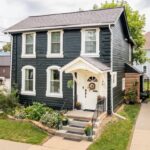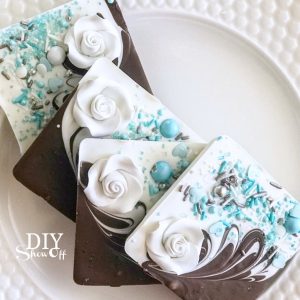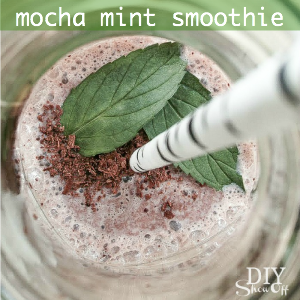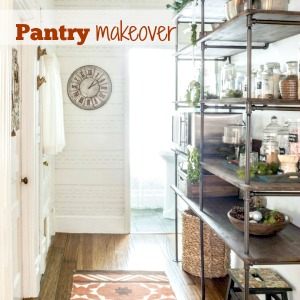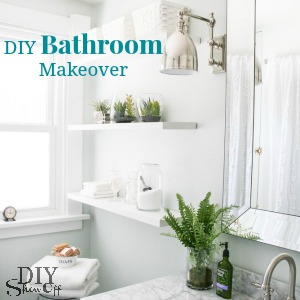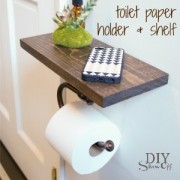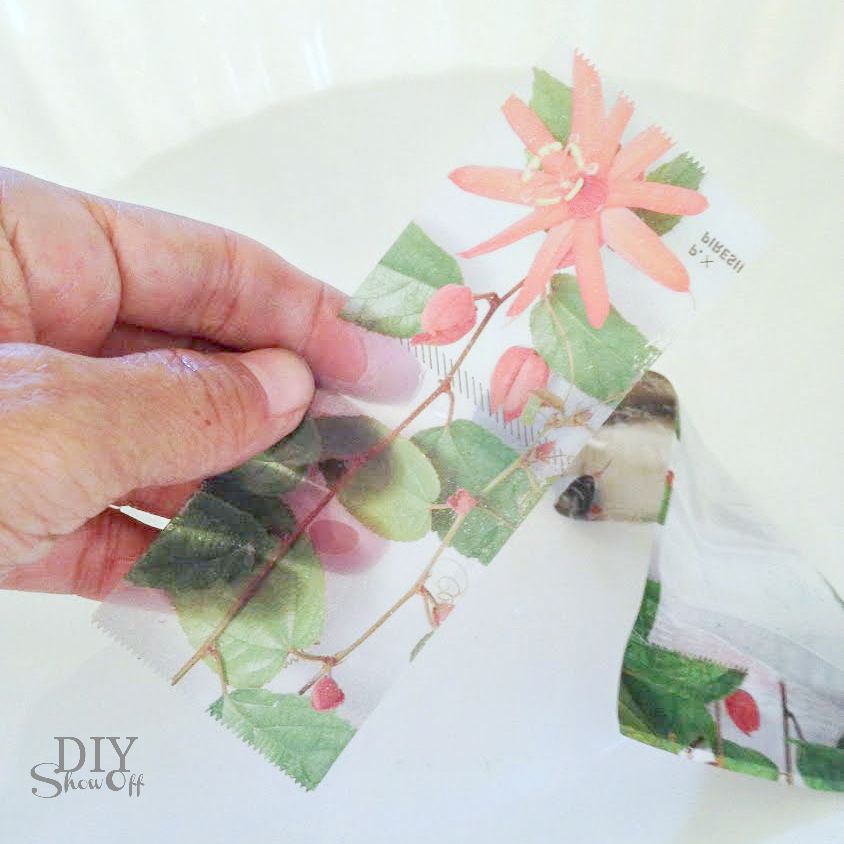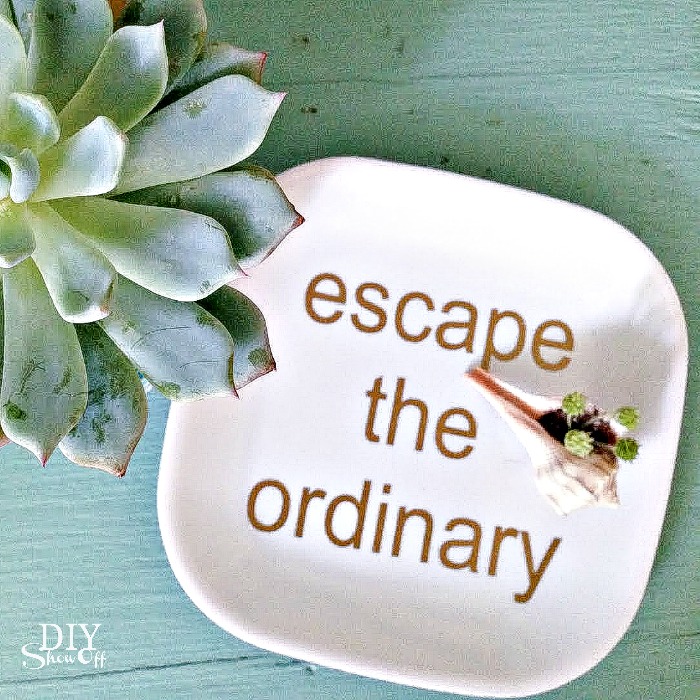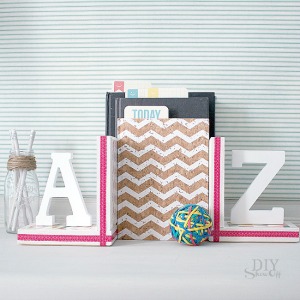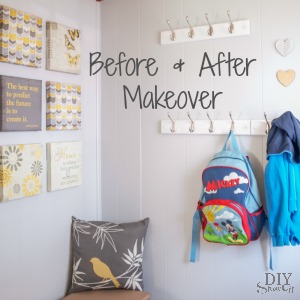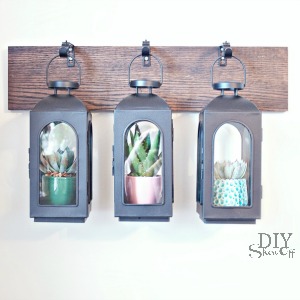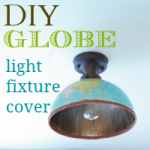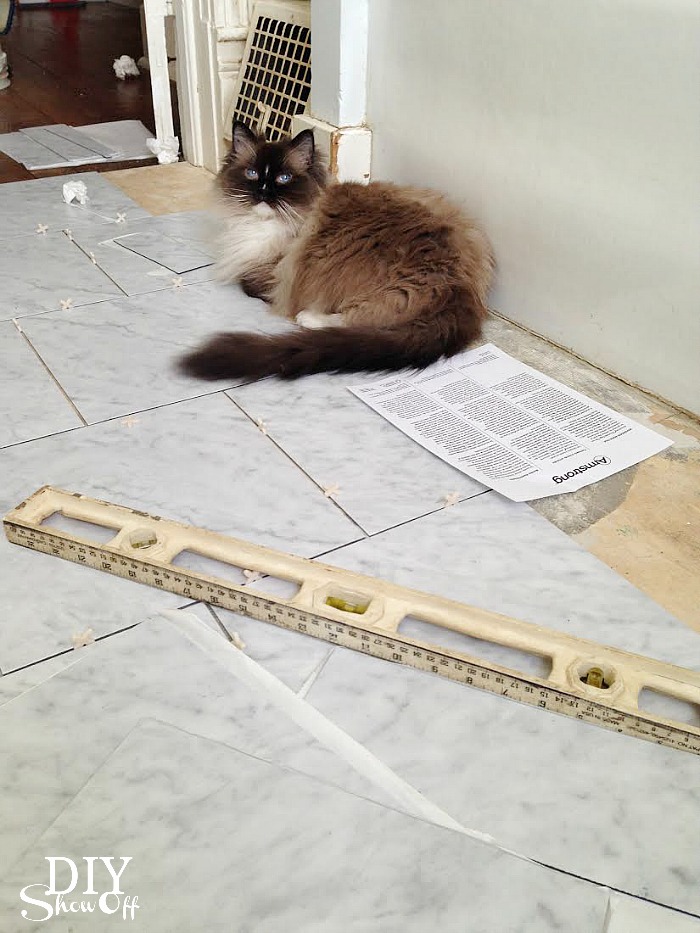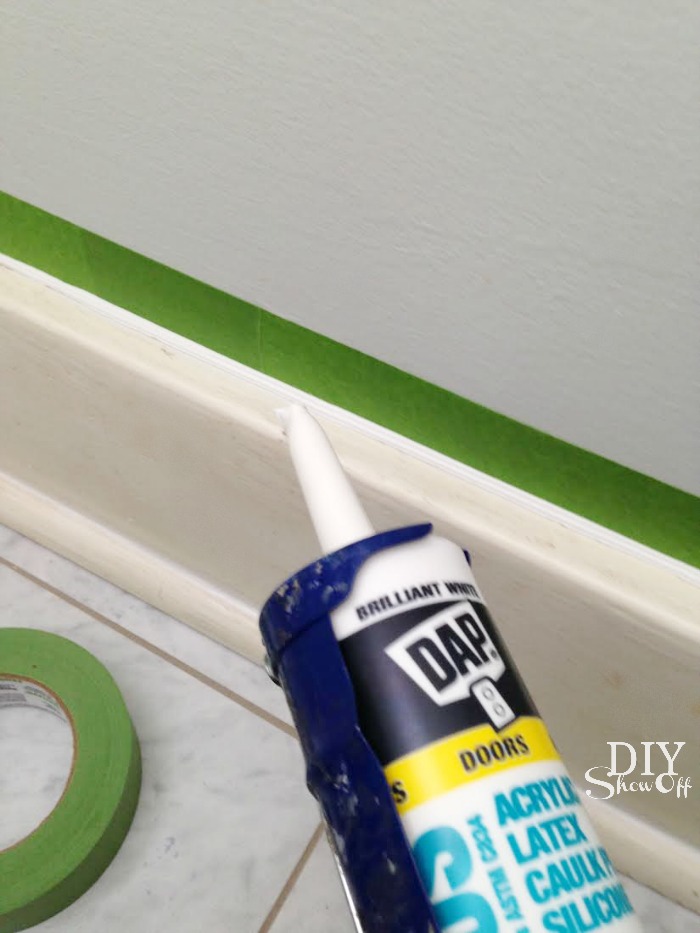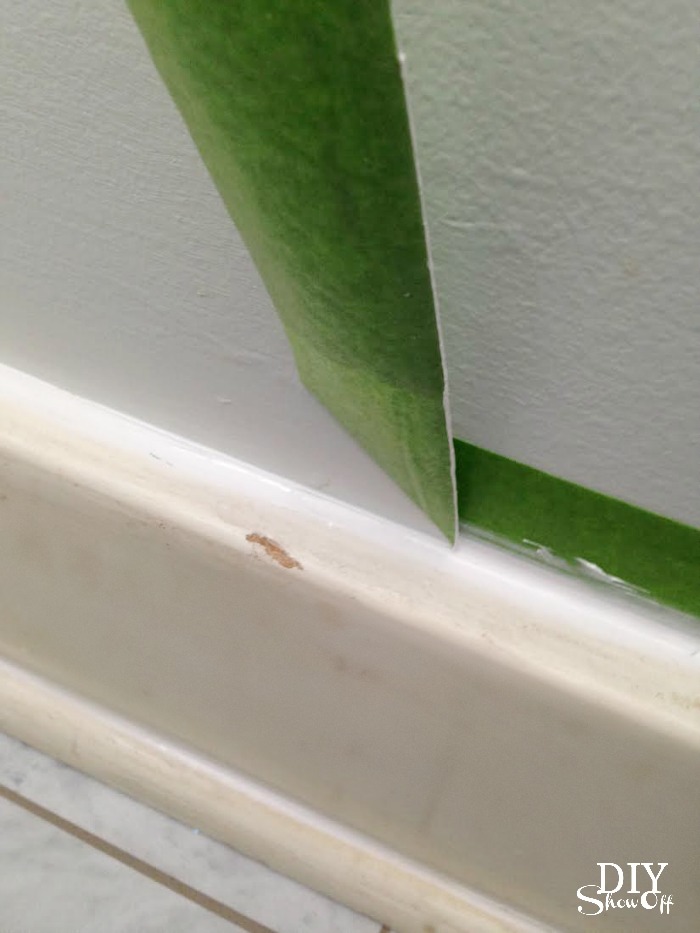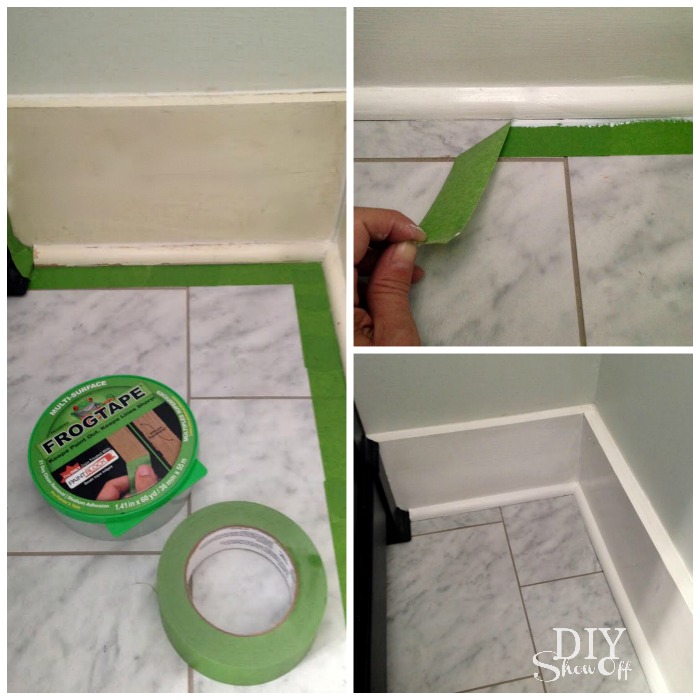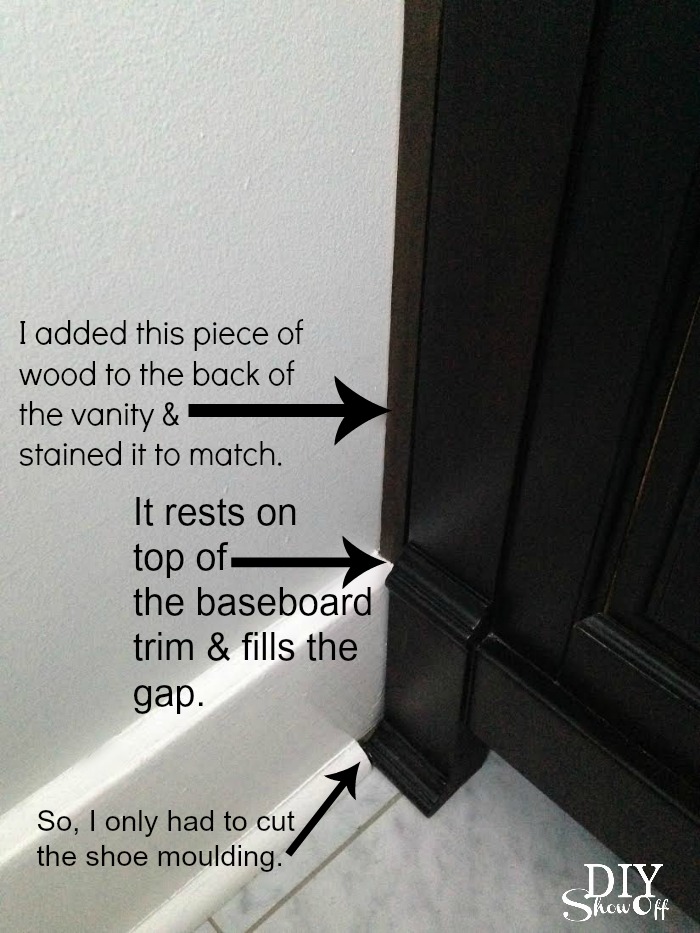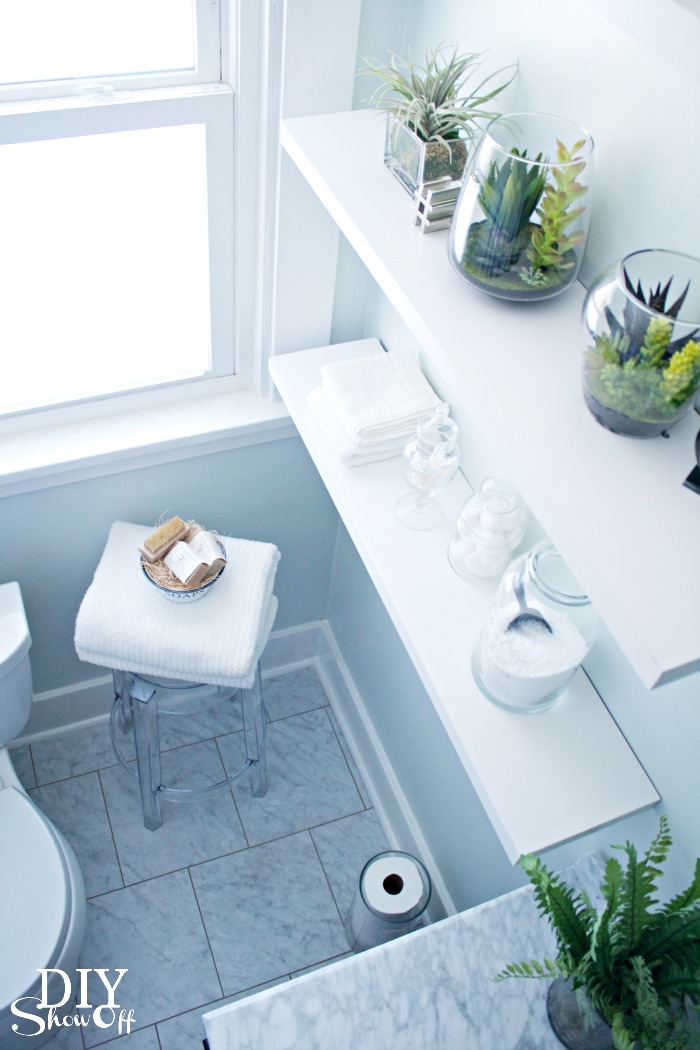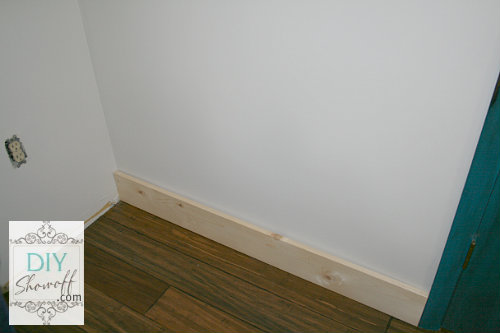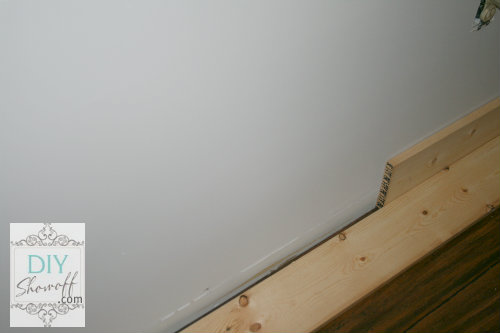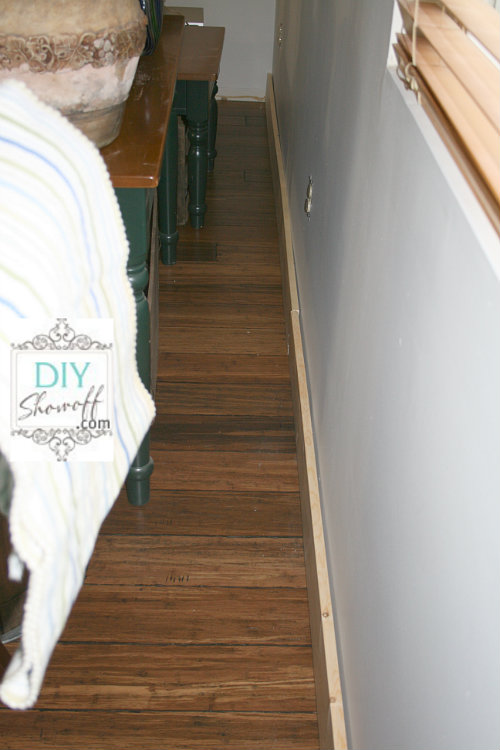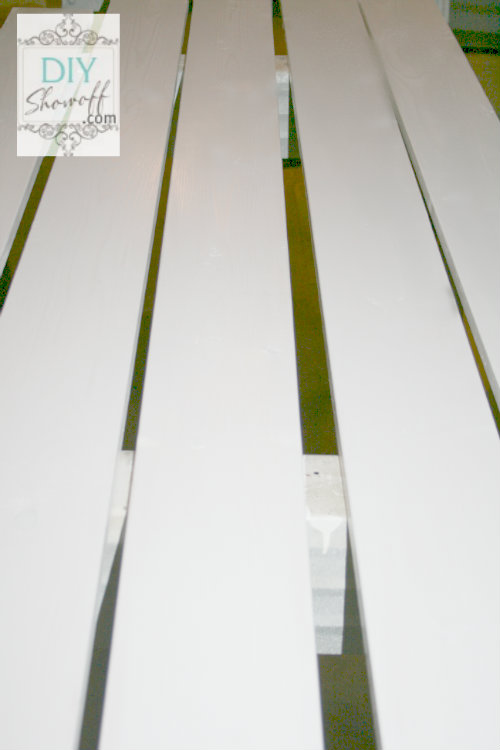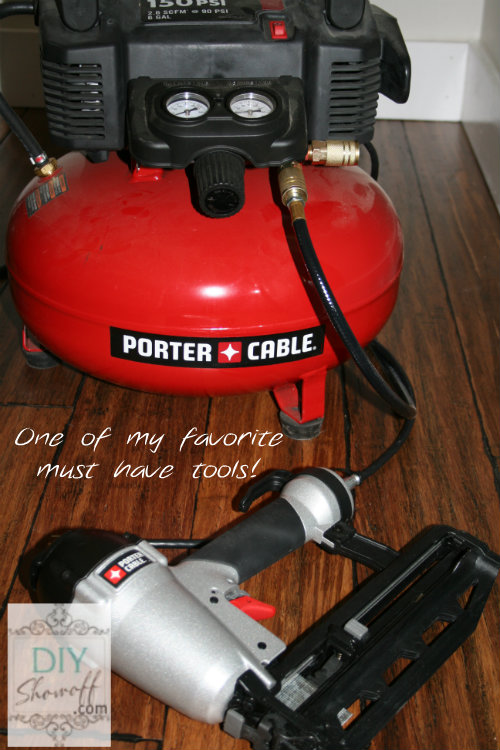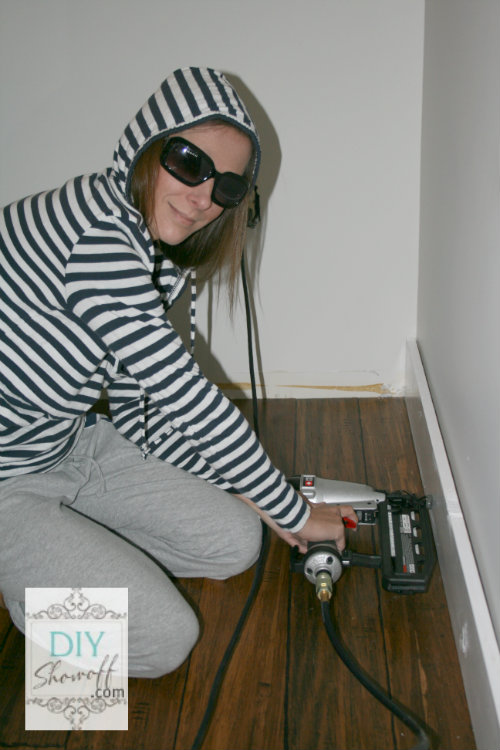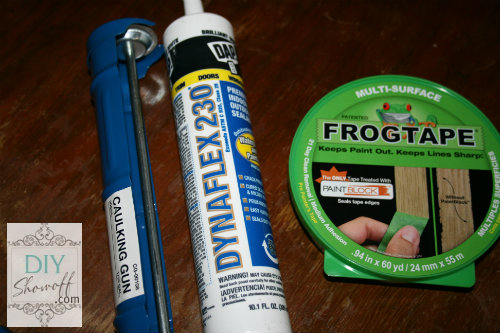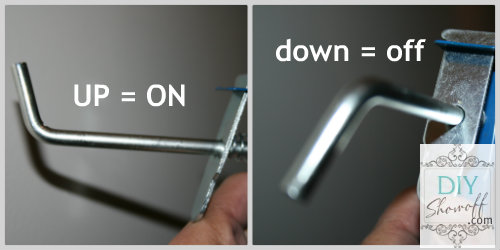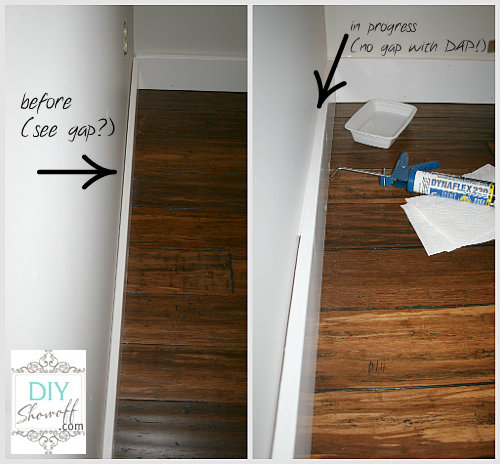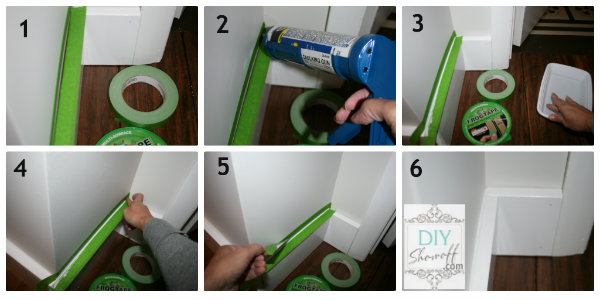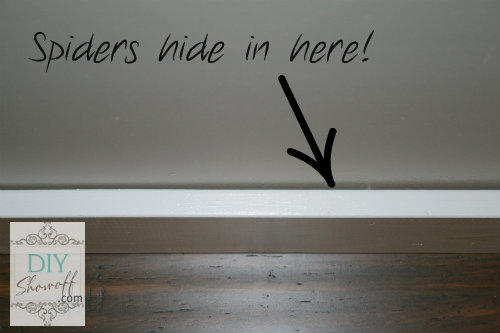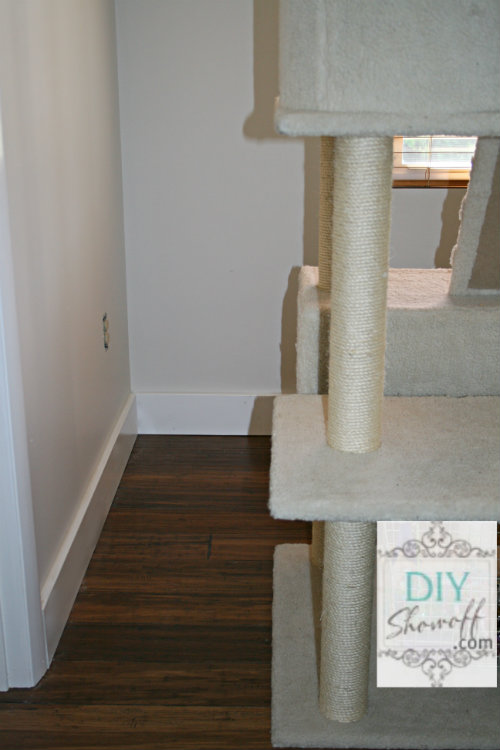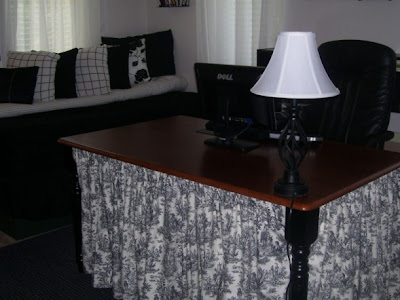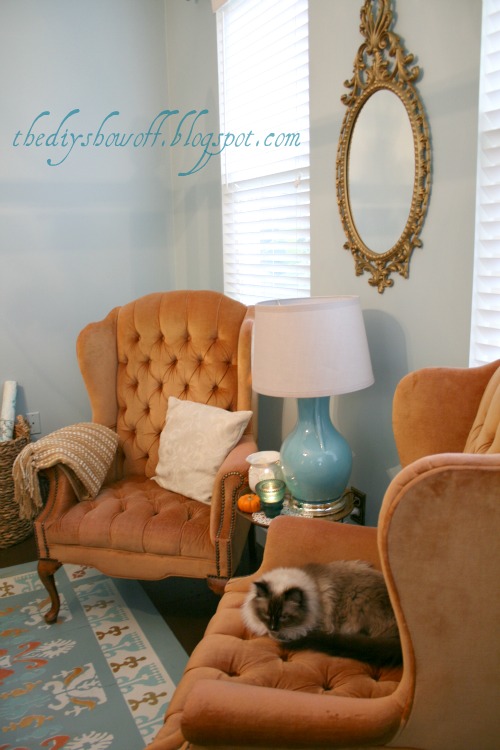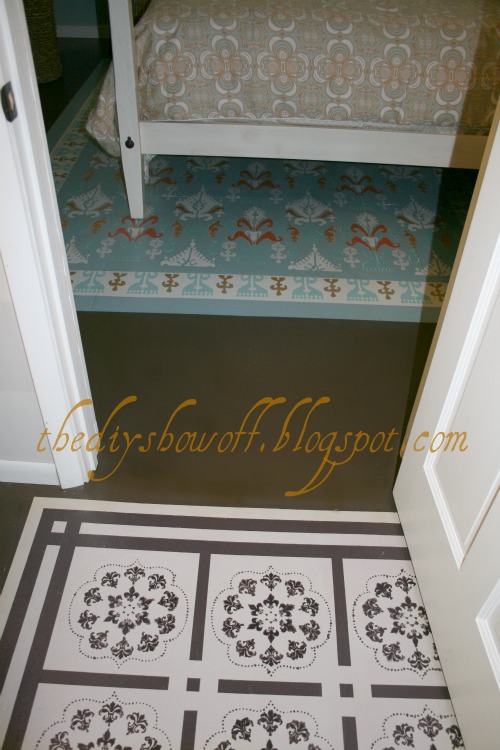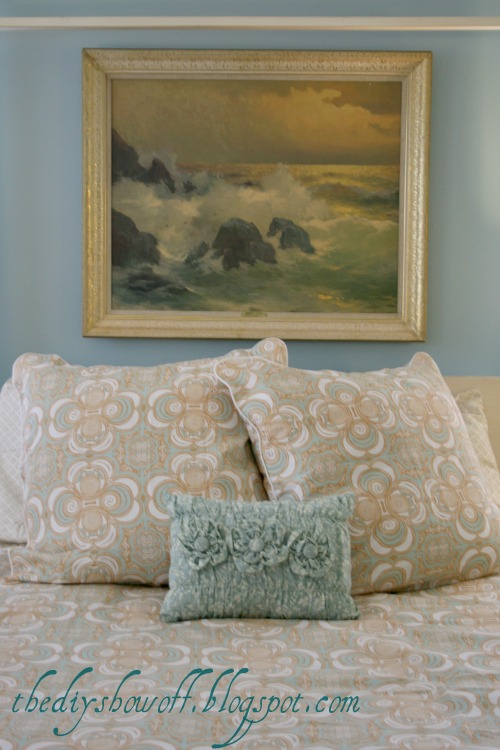Yesterday I shared how I installed grouted vinyl floor tiles in the bathroom and today I just wanted to share a little baseboard trim tip. I re-used existing baseboard trim because it’s the old wide original trim in good shape. See how to easily swap out your baseboards here and a little tip for easy decorative trim detail here.
I gave it a good scrubbing and a little scuffing with sandpaper.
Then reattached the baseboard trim using my nail gun and brads. Countersink the nails, fill with wood filler and sand.
Next I sealed all of the seams with caulk – where the trim meets the wall and where the shoe moulding rests against the baseboard. I use DAP paintable caulk for windows/doors/trim.
FrogTape® Mult-Surface tape applied to the wall ensures a nice straight line without caulk smears. Apply the tape horizontally above the baseboard onto the wall. Use your thumbnail or a credit card to activate the PaintBlock® Technology.
Cut the tip of the caulk tube at an angle (the larger the hole, the bigger amount of caulk-age, so I prefer to keep the cut on the small side. Holding the caulk gun at an angle so that the flat end of the cut hole faces the seam where the baseboard meets the wall, run a bead of caulk.
I fill my FrogTape container with a little bit of water. With a wet finger, smooth the caulk. I work from left to right and since this is a small space, I worked in an entire section (about 4-5 ft. at most). You’ll have a lot of excess (remember to have those paper towels handy).
Then peel away the FrogTape starting at a bottom edge and pulling up and away from the caulk.
Nice clean line! Repeat until all top baseboard seams are sealed.
Now repeat the caulking steps (without the painter’s tape) where the shoe moulding rests agains the baseboards. Once dry (about 30 minutes), it’s time to paint!
Paint is Dutch Boy’s Cabinet and Trim paint. I used FrogTape where the shoe moulding meets the floor to prevent getting paint on my nice new grouted vinyl tiles. Using my thumbnail, I again activated the Paintblock Technology, then painted my trim. After the second coat of paint, I removed the FrogTape while the paint was still wet.
The vanity: I could have cut the baseboard trim so that the vanity sat flush against the wall but since the countertop had a little play (it sat out from the vanity about an inch), I attached scrap (stained) 1x4s cut to size to the back of the vanity, so that it would hide the gap and rest above my baseboard. (Also…one of my baseboards was good and glued as well as nailed to the plaster wall…I feared created a bigger more involved mess with pulling it off.) Now my countertop rests against the wall and is flush with the front of the vanity with no overhang but I don’t believe there’s a law or rule that says the countertop must protrude from the vanity. Is there? It also gave me a little more wiggle room for the tight fit plumbing.
Good as new! I love fresh, clean, white baseboards.
I used my FrogTape along the door frame and window trim too.
If you missed it, you can see the complete before and after bathroom makeover here.
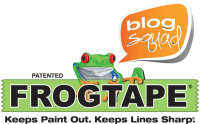
Disclaimer: I received compensation to complete this project for using FrogTape® products. All opinions, projects and ideas are based on my own experience.






